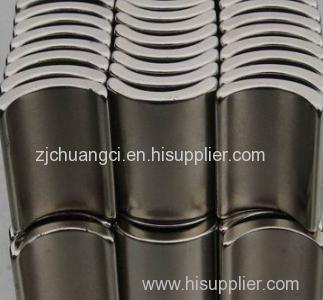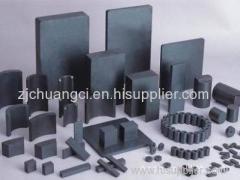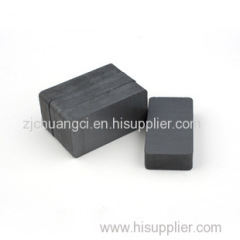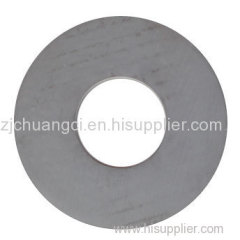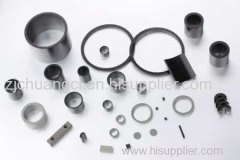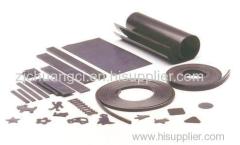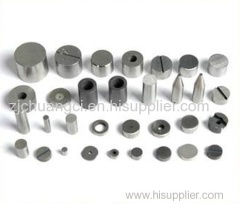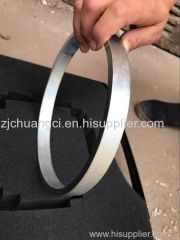|
ZheJiang Chuangci Science & Technology development Co.,Ltd
|
Rare earth NdFeB Magnet Tiles for used in Permanent Magnet Generators
| Payment Terms: | T/T,L/C,D/P,WU |
| Place of Origin: | Zhejiang, China (Mainland) |
|
|
|
| Add to My Favorites | |
| HiSupplier Escrow |
Product Detail
* Provide Custom product service
* Most powerful of rare earth permanent magnet
* Special R&D and produced for diverse of generators
Permanent magnet Generator use NdFeB magnet introduction
NdFeB permanent magnet materies came out in 1980, Are widely used in motor,speaker,toys and electron etc. It's composed of Nd2Fe14B.
Have ultra high magnet performance, maximum magnetic energy product (Bhmax) 10times of higher than Ferrite magnet.have better mechnical performance,can be cut to different shapes and drilling. Its maximum work temperature reach up to 200℃.Due to its element include easy corrosion component , be demanded to different surface coating treatment according to using requirements.( such as Zincification,Nickel Plating,Au Plating, Epoxy Plating etc.)
NdFeB is a alloy magnet composed of Neodymium,Fe,Boror and other trace metal elements. Is the strongest magnet rare earth magnet as far to found. Have very high magnetic energy product ( 8MGOe-55MGOe) and better Coercivity.its manufacturing process is mature, have strict quality assurance,perfect technical service and good performance cost ratio.
All Permanent Magnet Generators (in fact all Generators) work using the principles of Faradays Law and Lenzs Law.
A voltage (electromotive force or back emf) is induced (generated) inside a copper coil winding as a changing magnetic field passes through (cuts through) the winding. The magnetic field must be changing in magnitude (and ideally also in direction). The back emf, when the winding is part of a closed electrical circuit is used to create an induced current (the electrical load affects the magnitude of the current e.g. light bulb, charging battery, etc).
Lenzs Law states that the induced current direction is such that the magnetic field created by the induced current opposes the original change in magnetic field. Hence the minus sign in the below Faradays Law:-
E=-NA (dB/dt) where
E is the induced voltage (back emf)
N is the number of turns in the copper coil winding
A is the coil cross sectional area
dB/dt is the rate of change of magnetic field strength with respect to time
The direction of induced current could also be explained by Fleming's Right-Hand Rule.
So a generator requires a magnetic field that changes with time (e.g. magnets on a rotor) and copper windings (coils other electrically conductive materials other than copper could be used but copper windings are used as standard) positioned to have the changing magnetic field passing through the windings. The magnets may pass the open face of the coil windings, or they may pass through the centre of the windings.
Be aware that the voltage generated is a.c. (alternating current) it has positive and negative signal of a possibly sinusoidal nature / waveshape. As the magnetic field increases in magnitude dB increases (positive); as the magnetic field reduces in magnitude dB starts to reduce (negative) hence positive and negative voltage signal. If you require a d.c. voltage you will need some form of rectifier circuit (e.g. full wave rectifier) and possibly also some form of smoothing (e.g. capacitor). In more complex generators, the a.c. voltage is cleaned and then a new 50Hz mains voltage is created. We do not get involved in such generator circuitry design.
Generator designs can be such that more than one electrical phase can be generated in different windings (e.g. three phase windings). This is achieved by clever placement of the windings and magnets relative to each other and is design specific.
There are literally hundreds of designs of permanent magnet generator. It is assumed that people designing generators are suitably qualified (e.g. electrical and electronic engineers, design engineers, etc).
Quick rules for electricity generation using permanent magnet generators:-
The generated voltage is an alternating voltage (alternating current) with positive and negative voltages. For a dc current you will need rectification and perhaps also smoothing.
Ideally have a -N-S-N-S- type of arrangement with the copper windings.
More turns in the winding gives a higher N giving more voltage generated.
Faster movement (e.g. faster rotation) reduced dt giving more voltage generated.
Stronger magnets give more magnetic field output (B) giving more voltage generated.
If your design can incorporate more winding coils they could be connected in series to give extra voltage (but be careful to connect in the correct sense otherwise the coils may possibly cancel each other out; and also be aware of placing the coils at different positions could give different electrical phase angles which may or may not be desirable for your application) or they can possibly be connected in parallel for higher current capability (same voltage as a single coil). It depends on the design as to what is required.
We do not design generators we merely provide technical support on the magnet materials to use and also we manufacture and supply the magnets that could be used in generators and we would also supply the magnetic assemblies used in generators (to customer designs).
What magnet shapes are best for permanent magnet generators? This depends entirely on your design. Sometimes the magnets are arc segments. In other designs the magnets are blocks, discs, trapezoids, rings, etc. There is no fixed magnet size or shape that is best for permanent magnet generators.
Can we supply magnets for use in Wind Turbines? Yes. A wind turbine is a generator that uses wind as the power source for turning the wind turbine blades to turn the rotor. Some designs are very large and the magnets are sometimes best supplied as sub-assemblies; other designs are smaller and the magnets can be supplied as single piece blocks. Again, it really depends on the design as to what is required for size and shape. Often the customer has a design in mind and requires our technical support to verify the correct magnet choice, coating type, assembly procedure, cost reduction, etc. We can produce and supply magnets and magnetic assemblies for wind turbines and can provide relevant technical support on magnetic material choice.
Please contact us for quotation or more information !

